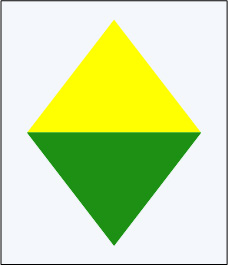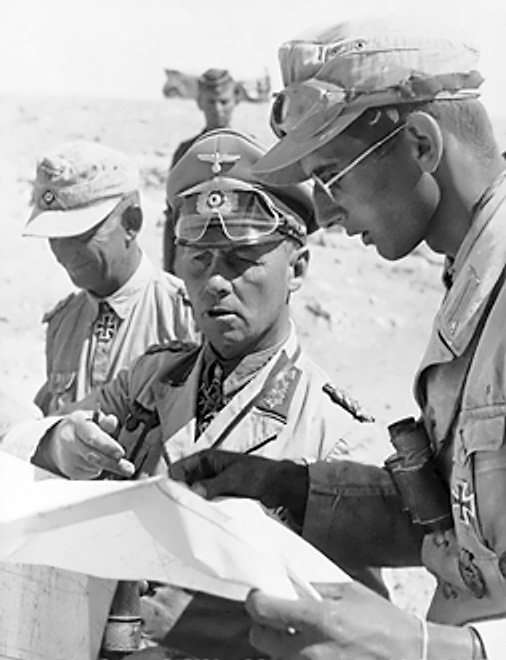|
Dan Pienaar
Major General Daniel Hermanus Pienaar (27 August 1893 – 19 December 1942) was a South African World War II military commander. Early life and career He was born in Ladybrand, Orange Free State and in his youth grew up in Natal. His family members had fought against the British during the Second Boer War. Pienaar joined the artillery branch of the Natal Police (NP) in 1911, and transferred to the Union Defence Forces (UDF) when they took over the NP in 1913. In World War I, he first served as an artilleryman in the South West Africa campaign, then with the South African Overseas Expeditionary Force in German East Africa in the South African Field Artillery Brigade and was mentioned several times in dispatches and then later in Palestine from 1917 until 1918 finishing the war with the rank of subaltern in the British Army. Between the wars He returned to the South Africa and back into the Union Defence Force ranks at the end of the war. He was commissioned and sent to Engl ... [...More Info...] [...Related Items...] OR: [Wikipedia] [Google] [Baidu] |
Ladybrand
Ladybrand is a small agricultural town in the Free State (South African province), Free State province of South Africa, situated 18 km from Maseru, the capital of Lesotho. Ladybrand is one of five towns that forms the Mantsopa Local Municipality. Founded in 1867 following the Basotho Wars, it was named after Lady (Catharina) Brand, the wife of the president of the Orange Free State, Johannes Brand. The settlement of Ladybrand was created by Voortrekkers to give them control over the territories conquered and captured after the above-mentioned Basotho war. In 1900, during the Second Boer War, Second Anglo-Boer War, Ladybrand came under the control of the British. Notable residents *Nico Diederichs - State President of South Africa#List of State Presidents, State President of South Africa from 1975 to 1978. *Arthur Setaba Pitso, an SACP supporter who was stabbed to death by unidentified persons at his home in Ladybrand, OFS, on 28 October 1972. Mr Pitso had organised stayaway ... [...More Info...] [...Related Items...] OR: [Wikipedia] [Google] [Baidu] |
South African 1st Infantry Division
The 1st South African Infantry Division was an infantry division of the army of the Union of South Africa. During World War II the division served in East Africa from 1940 to 1941 and in the Western Desert Campaign from 1941 to 1942. The division was disbanded on 1 January 1943, for conversion into what would become the 6th South African Armoured Division. The division was also briefly active after the war from 1 July 1948 to 1 November 1949.South African Defence Review via http://www.rhodesia.nl/sadfhist.htm Outbreak of war When Neville Chamberlain declared war on 3 September 1939, the Union Defence Force consisted of 5,385 Permanent Force members, 14,631 Citizen Force members and 122,000 Commandos of which only 39,000 were considered suited for field deployment. The Defence Act also prohibited the deployment of its members beyond the confines of southern Africa. On 4 September, General Hertzog resigned and was replaced by General Smuts and two days later, on 6 Septem ... [...More Info...] [...Related Items...] OR: [Wikipedia] [Google] [Baidu] |
Battle Of Gazala
The Battle of Gazala (near the village of ) was fought during the Western Desert Campaign of the Second World War, west of the port of Tobruk in Libya, from 26 May to 21 June 1942. Axis troops of the ( Erwin Rommel) consisting of German and Italian units fought the British Eighth Army (General Sir Claude Auchinleck, also Commander-in-Chief Middle East) composed mainly of British Commonwealth, Indian and Free French troops. The Axis troops made a decoy attack in the north as the main attack moved round the southern flank of the Gazala position. Unexpected resistance at the south end of the line around the Bir Hakeim box by the Free French garrison, left with a long and vulnerable supply route around the Gazala Line. Rommel retired to a defensive position backing onto Allied minefields (the Cauldron), forming a base in the midst of the British defences. Italian engineers lifted mines from the west side of the minefields to create a supply route through to the Axis side. Ope ... [...More Info...] [...Related Items...] OR: [Wikipedia] [Google] [Baidu] |
Operation Crusader
Operation Crusader (18 November – 30 December 1941) was a military operation of the Western Desert Campaign during the Second World War by the British Eighth Army (United Kingdom), Eighth Army (with Commonwealth, Indian and Allied contingents) against the Axis forces (German and Italian) in North Africa commanded by Erwin Rommel. The operation was intended to bypass Axis defences on the Egyptian–Libyan frontier, defeat the Axis armoured forces and relieve the 1941 Siege of Tobruk. On 18 November 1941, the Eighth Army launched a surprise attack. From 18 to 22 November, the dispersal of British armoured units led to them suffering 530 tank losses and inflicted Axis losses of about 100 tanks. On 23 November, the 5th South African Brigade was destroyed at Sidi Rezegh ( ) but inflicted many German tank casualties. On 24 November Rommel ordered the "dash to the wire" and caused chaos in the British rear echelons but allowed the British armoured forces to recover. On 27 November, t ... [...More Info...] [...Related Items...] OR: [Wikipedia] [Google] [Baidu] |
Libya
Libya (; ar, ليبيا, Lībiyā), officially the State of Libya ( ar, دولة ليبيا, Dawlat Lībiyā), is a country in the Maghreb region in North Africa. It is bordered by the Mediterranean Sea to the north, Egypt to Egypt–Libya border, the east, Sudan to Libya–Sudan border, the southeast, Chad to Chad–Libya border, the south, Niger to Libya–Niger border, the southwest, Algeria to Algeria–Libya border, the west, and Tunisia to Libya–Tunisia border, the northwest. Libya is made of three historical regions: Tripolitania, Fezzan, and Cyrenaica. With an area of almost 700,000 square miles (1.8 million km2), it is the fourth-largest country in Africa and the Arab world, and the List of countries and outlying territories by total area, 16th-largest in the world. Libya has the List of countries by proven oil reserves, 10th-largest proven oil reserves in the world. The largest city and capital, Tripoli, Libya, Tripoli, is located in western Libya and contains over ... [...More Info...] [...Related Items...] OR: [Wikipedia] [Google] [Baidu] |
Battle Of Amba Alagi (1941)
The Battle of Amba Alagi was fought in May 1941, during World War II, part of the East African Campaign. After the Italian defeat at Keren in April 1941, Prince Amedeo, Duke of Aosta withdrew his forces to the mountain stronghold at Amba Alagi. The mountain had galleries carved into the rock to protect the defending troops and hold ample ammunition and stores and the Italian troops thought themselves to be impregnable. According to other sources, however, the fortress was easily defendable thanks to its position and the mountainous terrain, but lacked food and water, so that Marshal Enrico Caviglia later criticised the Duke for having chosen it for his last stand, calling the Amba Alagi "''uno scoglio senz'acqua e senza viveri''" ("a rock with neither water nor food"). The initial attacks on the approaches to Amba Alagi by British troops under Major-General Mayne from the north, commenced on 4 May with a pincer from the eastern and western sides. There was hard fighting in th ... [...More Info...] [...Related Items...] OR: [Wikipedia] [Google] [Baidu] |
1st South African Infantry Brigade
The South African 1st Infantry Brigade was an infantry brigade of the army of the Union of South Africa during World Wars I and II. During World War I, the Brigade served as a British formation in Egypt and on the Western Front, most famously the Battle of Delville Wood. It was reactivated at the start of the Second World War as a South African formation and served in East Africa and the Western Desert; the Brigade disbanded on 1 January 1943. World War I When the First World War broke out in 1914, the South African government chose to join the war on the side of the Allies. General Louis Botha, the then prime minister, faced widespread Afrikaner opposition to fighting alongside Great Britain so soon after the Second Boer War and had to put down a revolt by some of the more militant elements before he could mobilise and deploy troops as an expeditionary force (some 67,000 troops) to invade German South-West Africa (now Namibia). The South African Union Defence Act of ... [...More Info...] [...Related Items...] OR: [Wikipedia] [Google] [Baidu] |
Northern Transvaal Command
Northern Transvaal Command was a command of the South African Army. It was active from 1959 to mid 2000 when it was disestablished. Formerly it was named Northern Command from 1946 to 1959. History Origins Union Defence Force Military Districts The command's origins may date to the formations of Military districts, No 5 and 6 in 1926, which then became Transvaal Command in 1934. Thereafter there were several quick name changes: Roberts Heights & Transvaal Command ; Voortrekkerhoogte & Transvaal Command 1939, and then Transvaal Command . Later the command became Northern Command in 1946; Northern Transvaal Command in 1959. In 1939 Roberts' Heights and Transvaal Command, with its headquarters at Roberts' Heights (now Thaba Tshwane), contained 6th Infantry Brigade, 1 Field Survey Squadron SAEC, the artillery depot, parts of the Special Service Battalion, elements of the Permanent Garrison Artillery, and the Artillery School. Its headquarters was in Pretoria, and within its command ... [...More Info...] [...Related Items...] OR: [Wikipedia] [Google] [Baidu] |




